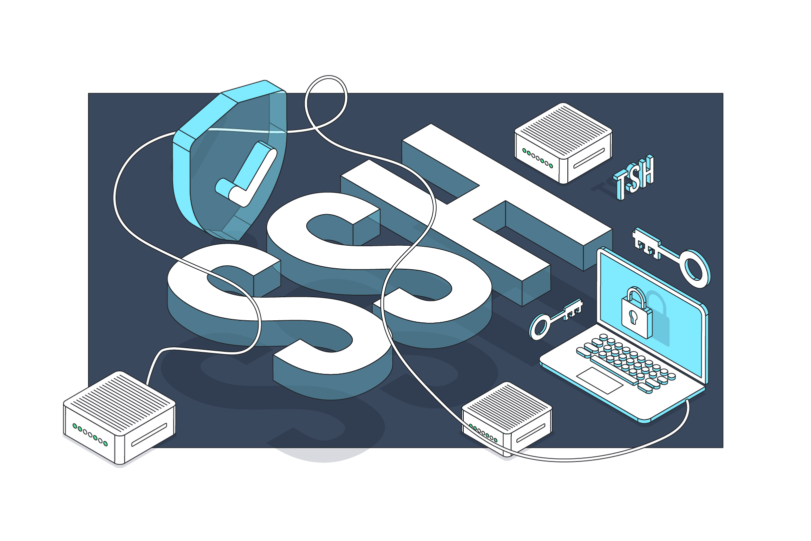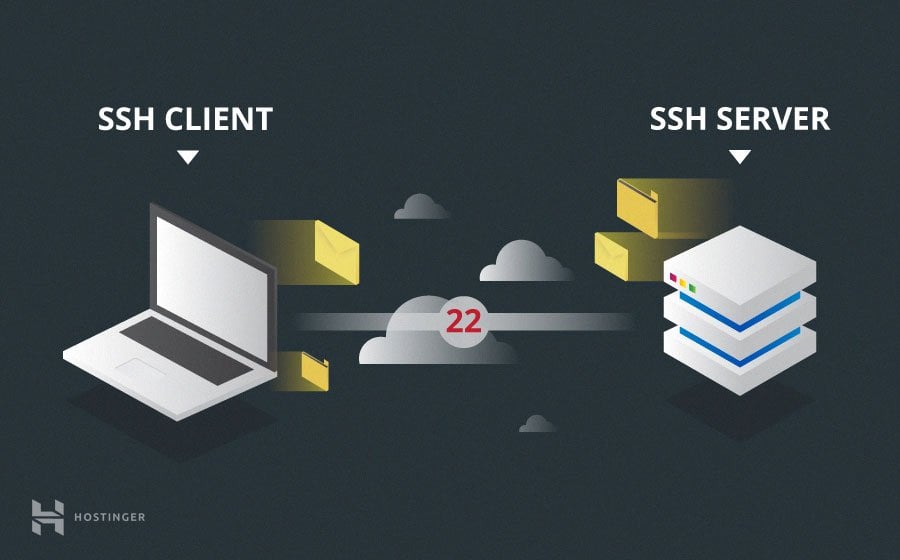Mastering RemoteIoT Web SSH: The Ultimate Tutorial For Tech Enthusiasts
Apr 04 2025
So, here's the deal—RemoteIoT Web SSH is like your golden ticket to accessing remote servers from anywhere in the world. Let me break it down for you. Imagine you're chilling at home or sipping coffee in a cozy café, and suddenly you need to tweak something on your server. RemoteIoT Web SSH has got your back. It’s not just about convenience; it’s about staying connected without losing control over your systems. This is the ultimate game-changer for techies who love flexibility and power.
Now, before we dive deep into the nitty-gritty of this amazing tool, let’s talk about why RemoteIoT Web SSH is so important. Whether you're a developer, a system administrator, or just someone curious about remote access, this tutorial is here to guide you through every step of the process. Think of it as your personal cheat sheet to mastering the art of secure shell (SSH) access via the web.
And here’s the kicker—this isn’t just any old tutorial. We’re talking about a step-by-step guide packed with actionable tips, tricks, and real-world examples. By the end of this, you’ll be equipped with the skills to set up, manage, and troubleshoot RemoteIoT Web SSH like a pro. So, buckle up because we’re about to take this tech journey together.
Here’s a quick rundown of what we’ll cover in this tutorial:
- What is RemoteIoT Web SSH?
- Why Use RemoteIoT Web SSH?
- Setting Up RemoteIoT Web SSH
- Securing Your SSH Connection
- Troubleshooting Common Issues
- Advanced Features of RemoteIoT Web SSH
- Best Practices for RemoteIoT Web SSH
- Real-World Applications
- Comparison with Other Tools
- Conclusion and Next Steps
What is RemoteIoT Web SSH?
Alright, let’s get to the basics. RemoteIoT Web SSH is essentially a web-based platform that allows you to connect to your remote servers using SSH (Secure Shell) directly from your browser. No need to install clunky software or deal with complex configurations. You just open your browser, log in, and voilà—you’re connected. It’s like having a virtual key to your server kingdom.
But here’s the thing—SSH isn’t new. It’s been around for ages, and for good reason. It’s secure, reliable, and super versatile. What RemoteIoT Web SSH does is take that power and make it accessible through a web interface. This makes it super convenient for people who need to manage their servers on the go.
And let’s not forget about the security aspect. SSH is renowned for its encryption capabilities, which means your data is safe from prying eyes. RemoteIoT Web SSH takes that security a step further by ensuring that your connection is as protected as possible, even when you’re accessing it from a public Wi-Fi hotspot.
How Does RemoteIoT Web SSH Work?
Let’s break it down. When you use RemoteIoT Web SSH, here’s what happens behind the scenes:
- You access the web-based interface through your browser.
- The interface establishes a secure connection to your remote server using SSH protocols.
- You can then execute commands, transfer files, and manage your server just as if you were sitting right in front of it.
It’s like magic, but with a lot of tech wizardry involved. And the best part? It’s all done through a simple, intuitive interface that even beginners can navigate with ease.
Why Use RemoteIoT Web SSH?
So, why should you care about RemoteIoT Web SSH? Well, there are plenty of reasons. First and foremost, it’s all about convenience. Who doesn’t love being able to manage their servers from anywhere? Whether you’re at home, at work, or traveling across the globe, RemoteIoT Web SSH gives you the freedom to stay connected.
But convenience isn’t the only perk. Here are a few more reasons why RemoteIoT Web SSH is worth your time:
- Security: SSH is known for its robust encryption, and RemoteIoT Web SSH builds on that by adding extra layers of protection.
- Flexibility: You can access your servers from any device with a browser, which means no more worrying about having the right software installed.
- Cost-Effective: Since it’s web-based, you don’t need to invest in expensive hardware or software licenses.
- Scalability: Whether you’re managing a single server or an entire fleet, RemoteIoT Web SSH can handle it all.
And let’s not forget about the peace of mind that comes with knowing your data is secure and your systems are under control, no matter where you are.
Setting Up RemoteIoT Web SSH
Ready to get started? Setting up RemoteIoT Web SSH is surprisingly easy. Follow these steps, and you’ll be up and running in no time.
Step 1: Sign Up for an Account
First things first, head over to the RemoteIoT Web SSH website and sign up for an account. It’s free to start, and you can always upgrade if you need more features. Just fill out the form, verify your email, and you’re good to go.
Step 2: Add Your Servers
Once you’re logged in, it’s time to add the servers you want to manage. You’ll need to provide the server’s IP address, port number, and SSH credentials. Don’t worry—it’s all secure, and your data is encrypted from end to end.
Step 3: Configure Your Settings
Next, take a few minutes to configure your settings. This is where you can customize things like session timeouts, keybindings, and other preferences. It’s all about making the platform work the way you want it to.
Step 4: Connect and Start Managing
And that’s it! With everything set up, you can now connect to your servers and start managing them. It’s as simple as clicking a button and typing in your commands. Easy peasy, right?
Securing Your SSH Connection
Security is paramount when it comes to remote server management. Here are some tips to keep your RemoteIoT Web SSH connection as secure as possible:
- Use Strong Passwords: Make sure your SSH credentials are strong and unique. Avoid using common words or easily guessable combinations.
- Enable Two-Factor Authentication (2FA): This adds an extra layer of security by requiring a second form of verification before you can log in.
- Regularly Update Your Software: Keep your SSH client and server software up to date to protect against vulnerabilities.
- Monitor Your Logs: Keep an eye on your server logs for any suspicious activity. This can help you catch potential threats before they become problems.
By following these best practices, you can ensure that your RemoteIoT Web SSH connection remains secure and reliable.
Troubleshooting Common Issues
Even the best tools can run into problems from time to time. Here are some common issues you might encounter with RemoteIoT Web SSH and how to fix them:
Issue 1: Unable to Connect
If you’re having trouble connecting to your server, double-check your IP address, port number, and credentials. Make sure your server is running and that there are no firewall rules blocking your connection.
Issue 2: Slow Performance
Slow performance can be caused by a variety of factors, including network congestion or server load. Try optimizing your network settings or upgrading your server resources if necessary.
Issue 3: Session Timeouts
Session timeouts can be frustrating, but they’re usually a security feature. You can adjust the timeout settings in your RemoteIoT Web SSH configuration to suit your needs.
Advanced Features of RemoteIoT Web SSH
Once you’ve mastered the basics, it’s time to explore some of the advanced features that RemoteIoT Web SSH has to offer. These tools can help you take your server management to the next level.
Feature 1: File Transfer
RemoteIoT Web SSH includes a built-in file transfer tool that lets you easily upload and download files between your local machine and your server. No more messing around with FTP clients.
Feature 2: Script Automation
Automating repetitive tasks is a great way to save time and reduce errors. RemoteIoT Web SSH allows you to run scripts directly from the web interface, streamlining your workflow.
Best Practices for RemoteIoT Web SSH
Here are some best practices to keep in mind when using RemoteIoT Web SSH:
- Stay Organized: Keep your server list tidy and well-labeled so you can quickly find what you need.
- Document Your Work: Keep notes on your configurations and any changes you make. This can be a lifesaver if something goes wrong.
- Backup Regularly: Always have a backup plan in case something happens to your server or data.
Following these practices will help you stay efficient and effective in your server management tasks.
Real-World Applications
So, how is RemoteIoT Web SSH being used in the real world? Here are a few examples:
- DevOps Teams: DevOps professionals use RemoteIoT Web SSH to streamline their workflows and manage multiple servers simultaneously.
- Web Developers: Web developers rely on RemoteIoT Web SSH to deploy code updates and troubleshoot issues on their websites.
- System Administrators: System admins use it to monitor and maintain their networks from anywhere in the world.
It’s a versatile tool that can be adapted to a wide range of use cases, making it an invaluable asset for anyone working in the tech field.
Comparison with Other Tools
There are plenty of other tools out there for remote server management, but RemoteIoT Web SSH stands out for a few key reasons:
- User-Friendly Interface: The web-based interface is intuitive and easy to navigate, even for beginners.
- Security Features: With built-in encryption and 2FA, it offers top-notch security without sacrificing usability.
- Cost-Effectiveness: It’s free to start and offers a range of affordable plans for more advanced users.
While other tools may offer similar features, RemoteIoT Web SSH combines convenience, security, and affordability in a way that’s hard to beat.
Conclusion and Next Steps
So, there you have it—a comprehensive guide to mastering RemoteIoT Web SSH. From setting it up to troubleshooting common issues, we’ve covered everything you need to know to become a pro at remote server management.
Here’s a quick recap of what we’ve learned:
- RemoteIoT Web SSH is a powerful tool for managing remote servers from anywhere.
- It’s secure, flexible, and cost-effective, making it a great choice for techies of all levels.
- By following best practices and exploring advanced features, you can take your server management skills to the next level.
Now it’s your turn. Take what you’ve learned and start experimenting with RemoteIoT Web SSH. And don’t forget to share your experiences in the comments below. We’d love to hear how you’re using this amazing tool to streamline your tech life


